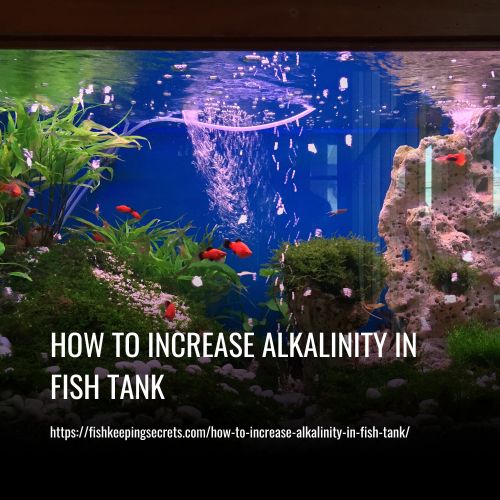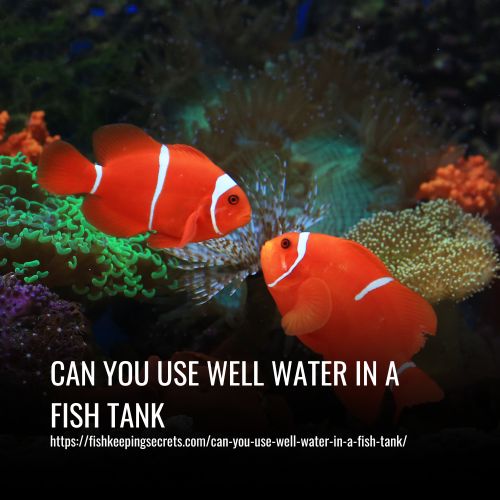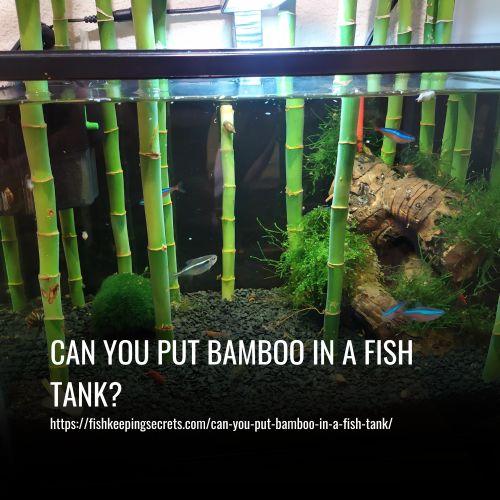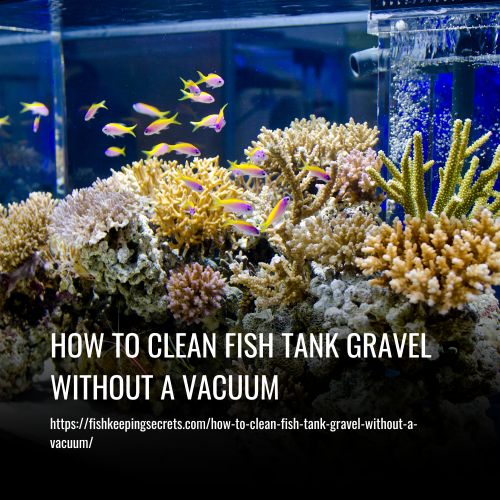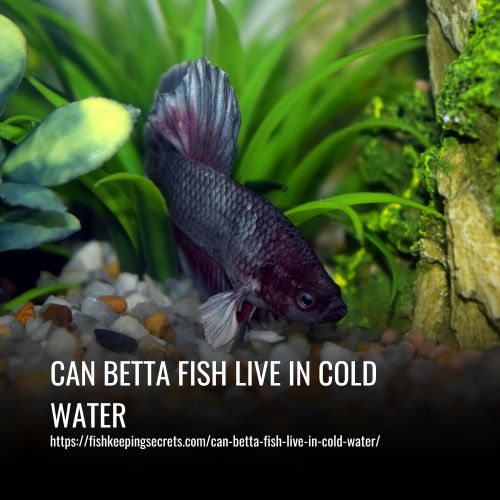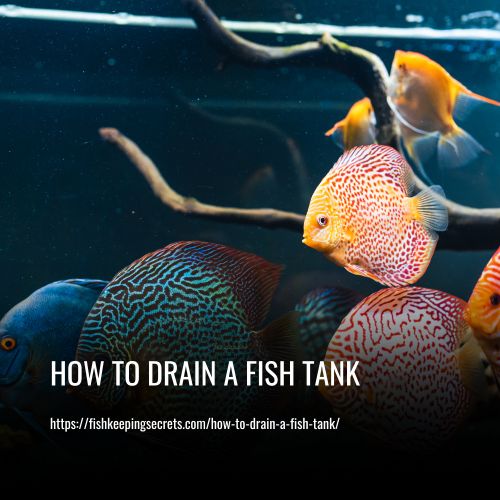Can Angelfish Live in Cold Water?
This post contains affiliate links. As an Amazon Associate, we earn from qualifying purchases.
No, angelfish are tropical fish and require warmer water temperatures to thrive. They generally need a water temperature between 75-82 degrees Fahrenheit. Cold water can negatively affect their health and overall well-being.
To further support your angelfish’s well-being, you should also provide them with brine shrimp or other high-protein fish foods, as well as maintain the water parameters within optimal levels (pH balance between 6.5-7.5).
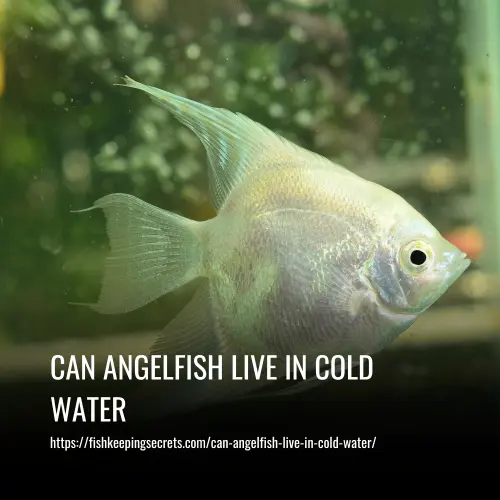
Temperature Requirements for Angelfish
Angelfish are a beautiful and popular species of fish to keep in aquariums, but they require very specific temperature requirements. To maintain optimal health, angelfish require temperatures between 75-82 degrees Fahrenheit. This means that colder climates may need an aquarium heater in order to keep the water at a stable temperature. Additionally, the pH balance should be kept between 6.5-7.5.
To ensure their health and happiness, angelfish should also be fed high-protein foods like brine shrimp regularly and kept with compatible species for peaceful community tanks. When purchasing your angelfish, make sure you research their ideal temperature range as some species prefer cooler temperatures compared to others that enjoy higher temperatures above 80 degrees Fahrenheit.
1. Ideal Temperature Range:
Angelfish thrive in temperatures ranging from 75 to 82 degrees Fahrenheit. It’s important to maintain a balance in pH levels that fall between 6.5-7.5 as well. Many angelfish prefer cooler temperatures, while some types of angelfish enjoy higher temperatures above 80 degrees Fahrenheit.
To ensure the health and happiness of your angelfish, it’s important to keep an aquarium heater on hand to maintain the tank temperature at a stable level and feed them high-protein foods like brine shrimp regularly. It is also beneficial to keep compatible species with your angelfish in order to create a peaceful community aquarium.
Before purchasing any fish, be sure to research their ideal temperature range as this could make all the difference in their successful acclimation and general wellbeing. With these tips in mind, you can create an environment that will allow your angelfish to thrive and live a happy life.
2. Range of Temperatures:
When considering an angelfish tank, it is important to take the temperature range into consideration. Angelfish are tropical fish and prefer temperatures between 75-82 degrees Fahrenheit. It’s also important to maintain a balance in pH levels that fall between 6.5-7.5.
Some angelfish may prefer cooler water, while others may enjoy warmer temperatures of 80 degrees or more. Aquarium heaters can help keep the tank at a stable temperature and make sure the fish are comfortable and happy with their environment.
When selecting fish for your tank, be sure to research their ideal temperature range so that you can provide them with the best possible conditions for successful acclimation and general wellbeing. With proper care, monitoring, and maintenance of the temperature range, your angelfish will have a healthy home in which it can thrive and live happily.
3. Colder Temperatures:
When it comes to providing the ideal environment for angelfish, it is important to consider the temperature range. Angelfish are tropical fish and prefer temperatures between 75-82 degrees Fahrenheit. However, some angelfish may be able to tolerate cooler temperatures, allowing them to survive in a community tank with other types of hardy fish that can also live in colder water.
Keeping the tanks at a lower temperature requires frequent monitoring and maintenance, as well as an understanding of the proper parameters needed for successful acclimation and general wellbeing. Fish stores usually carry a wide variety of angelfish species that can withstand cooler temperatures, such as the rosy barb or other peaceful fish.
4. Warmer Temperatures:
When it comes to angelfish, warmer temperatures are typically the ideal environment. Most species of freshwater angelfish prefer a temperature range between 75-82 degrees Fahrenheit, and some may even be able to tolerate slightly higher temperatures.
In order to provide the best conditions for your angelfish, an aquarium heater should always be used to maintain a consistent temperature in the tank. If you plan on keeping community tanks with other types of fish that require cooler temperatures, then a heater can be adjusted accordingly so as not to cause any harm to the other species.
Tank Conditions for Cold-Water Angelfish
Although not as popular as their warm-water counterparts, there is a wide variety of cold-water angelfish species that can make a great addition to any aquarium. These hardy fish are more tolerant of cooler water temperatures than other freshwater species and can thrive in temperatures ranging from 65 to 75 degrees Fahrenheit.
In order to provide the best conditions for your angelfish, it is important to keep the tank size relative to the number of fish and ensure proper temperature control. Aquarium heaters should be used when necessary, but cooler temperatures should be maintained at all times in order to prevent any health issues.
1. Tank Size and Filtration System:
When setting up a tank for cold-water angelfish, it is important to pay attention to tank size and filtration system. The size of the tank should be relative to the number of fish in order to ensure that there is enough space for them to swim freely.
Additionally, a good filter system is essential for removing any waste materials and ensuring clean water for your fish. A hang-on-back filter is generally recommended as these are easy to maintain and can offer excellent filtration capacity. For larger tanks, an external canister filter may be necessary as these provide much higher levels of filtration.
It is also important to ensure that the filter has a sufficient flow rate, which will help keep the water healthy and oxygenated. With the proper tank size and filter system in place, cold-water angelfish can enjoy a long and healthy life in their new home.
2. Water Parameters: pH, Salinity, and Hardness:
In order to ensure that cold-water angelfish thrive in their aquarium, it is essential to maintain the correct water parameters. The three main factors to consider are pH, salinity, and hardness.
The pH level of the water should be between 6.5 and 7.5 as this is optimal for most species of cold-water angelfish. Additionally, salinity should be kept low (1.018 – 1.022) as this helps keep the fish healthy and prevent any health issues from developing. Lastly, hardness should be kept at a moderate level (4 – 10 dGH) in order for the fish to absorb nutrients properly from their food sources.
It is important to regularly test these parameters and make any necessary adjustments in order to provide a safe and healthy environment for your fish. If you are unsure how to go about testing or adjusting these levels, it is best to seek advice from an expert at your local pet store or aquarium shop who can help guide you through the process.
3. Tank Mates: Peaceful Fish Species Selection:
When selecting tank mates for your cold-water angelfish, it is important to research and selects species that are peaceful and will not cause stress or harm to the angelfish. Popular choices include the rosy barb, white cloud mountain minnow, Corydoras catfish, and a wide variety of small tetras.
It is essential to avoid aggressive fish such as cichlids or goldfish as they can cause undue stress to the angelfish. Additionally, make sure that any fish you add will fit comfortably in the size of the tank you have available.
It is also recommended that you try to keep species from similar regions together in order to ensure that all inhabitants of the aquarium are accustomed to similar water parameters and temperatures. Cold-water angelfish prefer cooler temperatures ranging from 65-75°F, so making sure all tankmates are comfortable at this temperature range is key for a successful community aquarium.
4. Aquarium Heaters and Coolers to Regulate Water Temperature:
When it comes to keeping cold-water angelfish, having the proper temperature range is essential for their health and wellbeing. Aquarium heaters and coolers can be used to regulate the water temperature in order to ensure that cold-water angelfish are kept at a comfortable 65-75°F.
This temperature range allows for the optimal growth of brine shrimp, which provide an ideal food source for these tropical fish. Additionally, this temperature range also helps keep other aquarium inhabitants comfortable and in good health.
Aquarium heaters and coolers come in a variety of shapes, sizes, and models depending on the size of your tank and desired temperature range. When selecting an aquarium heater or cooler, make sure it is powerful enough to maintain the desired temperatures in the tank throughout any season or climate change. Additionally, it is important to purchase heaters or coolers that are compatible with your existing power supply or outlet type.
Feeding Choices for Cold-Water Angelfish
Cold-water angelfish are a popular species in freshwater aquariums and can be found in a wide variety of colors and sizes. While keeping cold-water angelfish is relatively easy, providing the right nutrition is essential for their overall health and wellbeing.
When it comes to feeding choices, many pet stores offer a variety of food specifically designed for cold-water angelfish. Brine shrimp, tubifex worms, and flakes are all great choices to provide adequate nutrient intake.
In addition to commercially prepared food, live food can also be used to feed your angelfish. Live foods like bloodworms, mosquito larvae, or daphnia are excellent sources of protein that provide additional enrichment for your fish. These live foods should be fed sparingly since they may contain parasites that could potentially harm your fish if overfed.
Types of Food Suitable for a Community Aquarium
A community aquarium is a wonderful way to enjoy the beauty of different fish species in one tank. However, when stocking your tank with multiple types of fish, it is important to understand their individual dietary needs and provide suitable food for each species.
For example, some fish prefer live foods like brine shrimp or worms while others may need a balanced diet of flakes and pellets. Some omnivorous fish may also require occasional treats such as frozen bloodworms or mosquito larvae. To ensure that all the fish in your tank are receiving adequate nutrition, it is best to purchase a variety of food from reputable pet stores.
In addition to providing the appropriate types of food for each species in your tank, you should also pay attention to portion size when feeding. Overfeeding can cause water quality issues such as ammonia spikes or uneaten food sinking to the bottom of the tank, leading to increased algae growth.
FAQs
Yes, you do need to add a heater to your angelfish tank. Angelfish prefer a steady water temperature of around 72°F – 82°F. In order to maintain the right level of warmth, you will want to install an aquarium heater in your tank. Make sure the heater is the right size for your tank and check on it periodically for any signs of malfunction.
Angelfish are best kept in water temperatures ranging from 72 to 82 degrees Fahrenheit. It is important to keep the temperature within this range as lower or higher temperatures can cause health issues.
Angelfish are best kept in water temperatures ranging from 72 to 82 degrees Fahrenheit. It is important to keep the temperature within this range as lower or higher temperatures can cause health issues.
Yes, angelfish can be sensitive to sudden changes in water temperature, pH levels, and other chemical parameters. It is important to perform regular water quality testing and not make sudden or drastic changes in the aquarium environment. When water changes are necessary, it is best to gradually add new water so there is minimal disruption to your angelfish.
Conclusion
A well-maintained community aquarium can be a rewarding experience for both the fish and their owner. By taking the time to research each species of fish and their individual dietary needs, you can ensure that your tank is stocked with happy, healthy fish.
Additionally, it is important to keep in mind portion size when feeding as overfeeding can have serious consequences on the water quality of your tank. With proper care and attention, you can create a beautiful oasis for your fish to call home!

